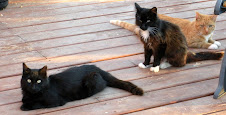Investigating my past through AncestryLibrary
led me to some surprising information. The U.S. Public Records Index Volume 1 revealed my last three addresses before I moved from Chicago to South Dakota and a very old phone number. Volume 2
listed an even older address. The U.S. Phone and Address Directories, 1993-2002 even let me click on info related to my neighbors. There are many Upells listed and most I have never located in real life. I found my twin sister's marriage license, but not my own!
When searching the Census I used the last name of Upell, born in Canada and died in USA. This came up with relatives from 1850 and on. I found my grandfather, Richard Upell, who was age 40 in 1920. In addition to my grandmother and my two older aunts, it lists my Great-Aunt Nora as age 28 and living in the same residence. I'm going to have to call my mom about that one… so when did she marry Uncle Charlie?
In Photos & Maps from among the "South Dakota" results I decided to look into the U.S. Indexed County Land Ownership Maps, 1860-1918. To refine my search I entered "Dewey" under county and came up with no matches. OK, when did Dewey County become a county? Wikipedia says 1893… Potter County is in there, oh well. Backing up I took at look at the Library of Congress Photo Collection, 1840-2000. First image was interesting – "Free homes, government lands, and cheap deeded lands in South Dakota" appears to be an ad from 1890. With over 900 photos the ability to refine the search was useful. Tons of other fun info to look at here – the Rapid City High School yearbook from 1938 says "Don't groan when I mention Algebra. Really, it isn't so bad. Miss Krieger can fill you up with equations faster than any other teacher on earth."
In HeritageQuest I searched for Eagle Butte, South Dakota under Books and found four results. One is the 1925 title Doane Robinson's Encyclopedia of South Dakota. I discovered Eldon Clark who came to Eagle Butte from Michigan in 1910. He was a lawyer and represented Dewey County in the legislature in 1913. Found Frederick Upell who was my great-uncle in Michigan Volunteers of '98: a Complete Photographic Record of Michigan's Part in the Spanish-American War of 1898. He was listed in the muster roll for the 34th Michigan Volunteers. This type of research takes time and so much patience – imagine tracking this info down before the world of digital!
Sanborn Maps didn't have a thing for north-central South Dakota, so I took a look at Fort Pierre in 1903. Looks like things were going on in Fort Pierre back then – an opera house, lumber yard, school, churches, boarding houses, etc. The population is listed at 500. This resource was easy to navigate and the key was helpful. I also found the PDF download easy to read.






